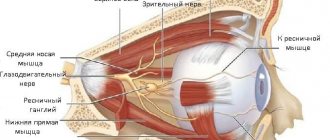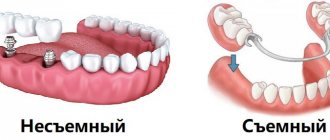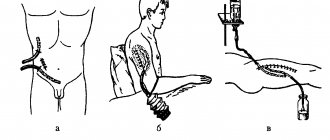Showing concern for the rights of citizens and remembering that in previous times many citizens were treated not only without asking for their consent, but even actively against their will, the Russian legislator introduced into the field of civil relations such a concept - the patient’s voluntary informed consent to medical intervention . At the same time, of course, the legislator wanted what was best. But it turned out as always.
As a result, this undoubtedly democratic measure often began to be used by very unscrupulous citizens as a way to make money from the legal ignorance of medical workers. And legally trained medical workers began to be forced to invent documents monstrous in bulk and content, from which the patient, already trembling in anticipation of difficult treatment, learned about all sorts of even more unpleasant and often casuistic events that could theoretically happen to him, and was forced to give in your voluntary consent.
As a result, the patient developed a strong conviction that evil was being planned against him in this clinic, and the doctors themselves felt almost like executioners, dooming another victim to death. Of course, it has become very difficult to establish subtle emotional contact between the parties in such a situation. However, since legal requirements exist, dental clinics must comply with them.
Where did the patient's voluntary consent come from?
Fundamental rights in the field of protecting the life and health of citizens are guaranteed by the Constitution of Russia. Article 20 declares the right to life, and articles 22 and 23 confirm the rights of citizens to freedom, personal integrity, as well as privacy, personal and family secrets. These provisions are expanded by Article 21, which states, in particular, that no one can be subjected to medical, scientific or other experiments without voluntary consent.
In furtherance of the right to life, Article 41 of the Constitution provides citizens with the right to health care and medical care. Apparently, in development of these provisions, the legislator introduced two separate articles into another federal act (Fundamentals of the legislation of the Russian Federation on the protection of the health of citizens). Article 32 of the Fundamentals determines that a necessary precondition for medical intervention is the informed voluntary consent of the patient.
Consent must always be given, except in cases where the patient’s condition does not allow him to express his will, and medical intervention is urgent. Then the question of its implementation in the interests of the patient is decided by the consultation, and if it is impossible to assemble a consultation, the attending (duty) doctor directly, with subsequent notification of officials of the medical institution.
Consent to medical intervention in relation to persons under the age of fifteen years, or citizens recognized as legally incompetent, is given by their legal representatives after providing them with information about the health status of such persons, including information about the results of the examination, the presence of a disease, its diagnosis and prognosis, treatment methods, associated risks, possible medical intervention options and their possible consequences. In the absence of legal representatives, such a decision can also be made by a council, and if it is impossible to assemble it, by the attending (duty) doctor.
Article 33 of the Fundamentals simultaneously grants the right to the patient or his legal representative to refuse medical intervention or to demand its termination; however, it establishes that the possible consequences must be explained to the patient or his legal representative in a form understandable to them. Refusal of medical intervention indicating the possible consequences is recorded in the documentation of the medical institution and signed by the patient or his legal representative, as well as a medical professional
If the parents or other legal representatives of a person under the age of fifteen years, or the legal representatives of a person recognized as incompetent in accordance with the procedure established by law, refuse medical care necessary to save the lives of these persons, the medical institution has the right to go to court to protect the interests of these persons.
In addition, a citizen, on the basis of Article 31 of the Fundamentals, can either refuse to receive information about the state of his health (and in this case no one has the right to provide him with this information against his will), or, on the contrary, receive available information about the state of his health, including information about the results of the examination, the presence of the disease, its diagnosis, treatment methods, prognosis, risks, possible options for medical intervention, their consequences and the results of the treatment, as well as directly familiarize himself with the medical documentation reflecting the state of his health , and get advice on it from other medical specialists.
At the patient's request, he is provided with copies of medical documents reflecting his state of health, if they do not affect the interests of a third party. The combination of such contradictory requirements introduces even more confusion into the heads of doctors, which results in completely opposite actions - from drawing up gigantic permitting documents to the complete absence of them. Healthcare workers have no less difficulty defining the concept of “medical intervention.”
The fact is that, using this term itself and establishing requirements for the process of its implementation (obtaining the voluntary informed consent of the patient), neither the legislator nor the relevant federal departments (Ministry of Health, Ministry of Justice) gave an interpretation of what “medical intervention” constitutes. As a result, both representatives and recipients of medical services, as well as other, less desirable participants in their relationships (for example, courts), are forced to turn to international documentation and nomenclature.
In international practice, the definition of the concept of “medical intervention” is used, given in the “Declaration on the Policy of Patient Rights in Europe”, which stands for “any examination, treatment or other action with a preventive, therapeutic or rehabilitative purpose, performed by a doctor or other manufacturer of medical services." This definition is recognized as basic by the World Health Organization (WHO/WH0,1994).
The use of such an interpretation of this concept (and there are no others, as we said, in Russia) leads to the fact that medical intervention means any action performed by a doctor or other medical personnel of the clinic in relation to the patient. As a result, according to Russian legislation, it is required to obtain the patient’s consent for any type of treatment in any clinic, including a dental clinic. What can dentists do in this situation?
All that remains is to act in accordance with the law. Informed voluntary consent to medical intervention or refusal of medical intervention is drawn up in writing, signed by a citizen, one of the parents or another legal representative, a medical professional and contained in the patient’s medical documentation (clause 7 of Article 20 of the Federal Law of November 21, 2011 No. 323- Federal Law of November 21, 2011 “On the fundamentals of protecting the health of citizens in the Russian Federation”).
However, the significance of such consent for the clinic is zero. After all, the clinic strives to satisfy the patient’s right to voluntary informed consent not so much in order to inform the patient in detail, but in order to protect itself from possible claims and their legal consequences associated with violation of legal requirements.
At the same time, the vast majority of patients do not need such complete and detailed information. Some of them believe that by turning to the clinic for help, they have already demonstrated the necessary amount of trust in the doctor and understanding of the need for this or that treatment. Another part of patients simply does not want to receive additional information that may be unpleasant for them. Although, of course, there is a group of patients who are happy to receive any additional information about their health and prospects.
Another thing is that in recent years, situations have increasingly arisen when an unconscious or conscious infringement of a patient’s rights to voluntary informed consent becomes a reason for filing a lawsuit against the offending clinic. And in this case, the lack of written confirmation that the patient received all the necessary information makes all subsequent attempts by the clinic to prove its case completely untenable. In fact, all the voluminous and scattered requirements of the legislator can be reduced to a short text containing a block of specific, succinctly stated questions that imply unambiguous answers.
Many doctors, administrators and managers ask the following question: “Very often patients come only for a consultation, and it seems like you can’t put him in a chair without a document... and then we don’t know what to sign.”
Let's start with the legal aspects. When does any document in the clinic become the object of inspection? There are three cases: 1. a patient’s application to issue copies of his medical documents 2. an unscheduled inspection by supervisory authorities (Rospotrebnadzor, Roszdavnadzor) based on a patient’s complaint 3. a scheduled inspection by supervisory authorities
I deliberately do not take into account expensive consultations on choosing a detailed prosthetic plan, when the patient receives a detailed medical and financial plan as a result. This requires the establishment of a truncated set of documentation for the patient: contract + ID for consultation + establishment of a card + receipt (cheque)).
In the case of a simple free consultation, the situation is as follows: 1. (application for medical documents) - if the patient was only consulted and was not further treated, then he will not be interested in receiving copies of those documents that do not exist. 2. (check based on a complaint) - since there is nothing to complain about (there is no treatment or expensive consultation), then there will be no complaint 3. (routine check) - they check only those cards that are in the clinic, and the cards for this patient No.
Therefore, consultations fall out of sight of the inspectors and you can arrange them as convenient for a particular clinic, namely: 1. if you don’t mind the time and paper, then you can sign the IDS for the consultation + create a card 2. sign only the IDS for the consultation 3. do not enter anything and do not sign 4. If the consultation is paid, then there is, of course, a very minimal risk that there will be some kind of dissatisfaction, however, I believe that if the patient is dissatisfied, in 100% of cases the cost of the consultation will be returned to him and the problem will be solved. Well, it’s required, even if the cost of a consultation is 500 rubles, to keep a truncated set of documents (agreement + IDS for consultation + card + receipt (cheque)).
Below is a sample (form) “Informed voluntary consent to the provision of paid medical services”, suitable for any medical specialty; for this it is necessary to replace the words in bold with any other medical specialty (gynecology, ophthalmology, ENT, plastic surgery, cosmetology, neurology , manual therapy, etc.) - for all these specialties there is a set of special, anti-claims documentation.
Sample (for any specialty):
Informed voluntary consent to the provision of paid dental services
Consultation with a dentist
This document indicates that, in accordance with Art. 19-23 of Federal Law N 323-FZ “On the fundamentals of protecting the health of citizens in the Russian Federation”, all the necessary information was provided about the medical services that were forthcoming for me and that I agreed with the conditions given to me for their implementation. This document is a necessary precondition (permission) for the start of a consultation appointment.
I__________________________________________, I am asking for consultative and diagnostic
(last name, first name, patronymic of the patient)
medical services in dentistry . I agree to receive detailed explanations about my health status, existing diseases, recommended methods of additional diagnostics and treatment. I have been informed by the doctor about the specifics of the upcoming consultation and I give my consent to it, which I sign with my own hand.
Patient signature: _________________________________/ ______________________________/
(signature) (full name)
The interview was conducted by a doctor: __________________________ / ________________________________ /
(signature) (signature decryption)
Date: "____" ____________ 201
To check whether your documents comply with legal requirements and whether they protect your clinic from claims, you can apply for a free audit of the documentation of a private medical clinic or order a ready-made set of anti-claims documentation
Patient informed consent model in dentistry
During the conversation prior to the start of treatment, the doctor should explain to the patient:
- that he really has this or that disease;
- name this disease, formulate a diagnosis in a form accessible to the patient, and indicate how such a disease could have ended if the patient had not sought medical help or refused treatment;
- briefly indicate the treatment methods that may be available, and explain in sufficient detail (and again, accessible!) what he is going to do to treat a given disease in a given patient in a specific clinic;
- without going into details, explain what possible complications of treatment this patient may have and why;
- indicate what treatment options for this disease exist for this patient and why the doctor is going to use the chosen option;
- explain what features will accompany the chosen treatment option and what is the expected result upon completion of all treatment measures.
Protocol for voluntary informed consent
These explanations are included in an extremely brief form in the medical records used in this clinic (diagnosis in the formulation according to ICD-10, treatment method, treatment option, treatment plan). After that, a protocol of voluntary informed consent for medical intervention is drawn up and signed with the patient; it is first explained that treatment can begin only after the patient receives satisfactory answers to all questions.
To do this, it is proposed to include in the text of the protocol five questions in the formulations used by the basic legislation of the Russian Federation on the protection of the health of citizens. And the patient is invited to answer them “Yes” or “No” by personally entering the answers into the protocol form, while simultaneously indicating his identifying data - last name, initials, signature, place and date of signing the protocol.
At the same time, the protocol will avoid including unnecessary details and, at the same time, will fully meet the requirements of the legislator - the patient will receive answers to exactly those questions and in the wording required by the legislator, while the patient personally confirms the receipt of satisfactory answers to these questions. It should be noted that the head of the dental clinic must provide two forms of protocol - directly for the patient and for the patient’s legal representative if he is under 15 years of age.
The role of informed voluntary consent in protecting the interests of medical workers
Informed voluntary consent to medical intervention is a legal requirement. However, medical organizations still make a lot of mistakes during this procedure, which can lead to serious fines and administrative liability for both doctors and medical organizations, and in the case of disputes between a medical organization and patients in the courts, the lack of such consent or errors in the procedure for obtaining it will play against medical workers. Irina Nadelyaeva, head of the research organization department of the Federal State Budgetary Institution “Russian Scientific Center for Surgery named after acad. B.V. Petrovsky"
Informed voluntary consent and refusal of medical intervention. Key aspects
Informed voluntary consent (IVC) is one of the most important documents used by a medical organization, and its absence can have serious legal consequences for the organization itself or for a specific doctor. According to Article 20 of Federal Law No. 323 “On the fundamentals of protecting the health of citizens in the Russian Federation,” medical intervention cannot be provided to a patient without obtaining an IDS from him or his legal representative. The voluntary informed consent must be filled out in full and contain information:
- about the goals and methods of providing medical care;
- about the risks associated with the provision of medical care; about possible options for medical intervention;
- about the consequences of the medical intervention;
- about the expected results of medical care.
The IDS must be certified by the signature of the patient, doctor, and the date of signing the document.
Since the term “legal representative” is mentioned in the law very often, it is important to correctly understand who this is. Legal representatives for children are their parents or adoptive parents, legal representatives are also guardians or trustees. It is very important to remember that grandparents and other close relatives are not legal representatives.
Certain restrictions apply to minors and those with incapacity when signing an IDA. Thus, minors, only having reached the age of over 15 years, receive the right to independently sign informed voluntary consent to medical intervention. In some cases, consent to medical intervention can only be signed by persons who have reached the age of full majority (age 18), for example, consent to any medical procedures for donor purposes. In other cases, such consent must be signed by one of the parents or another legal representative.
Doctors often wonder what to do if a patient refuses any medical intervention. In such cases, it is necessary to issue another significant document - refusal of medical intervention. This important document will protect the doctor or medical organization in the event of claims from the patient. It is very important here that the possible consequences of refusal must be explained to the patient or his legal representative in a form accessible to him - the patient or his legal representative must understand the risks that will be associated with the fact that the medical intervention will not be implemented. Refusal of medical intervention must be documented. It must clearly indicate the type of medical intervention that the patient refuses, and that the patient has received clear explanations about the consequences of refusal.
Problems often arise when providing medical care to children or the disabled, if parents or legal representatives write a refusal to provide medical care, and doctors are sure that such help is necessary. Then, to protect the interests of patients, despite the refusal of the parents or legal representative, the medical organization can go to court and, having received court permission, still perform medical intervention. Situations like this require proper documentation. A medical organization must have local acts that provide the opportunity to go to court to protect the interests of the person who requires medical care.
It is important to understand that informed consent is required not only when performing surgeries, but also when receiving primary health care. There is an Order of the Ministry of Health that contains a prescribed informed consent form that must be signed by the patient. If such a form is not signed, or a different or incomplete form of informed consent is signed, then Roszdravnadzor, when conducting inspections, recognizes this as a violation, and the medical organization may be fined.
The development of electronic document management in medical organizations has led to the fact that an innovation has appeared in the law in the chapter on voluntary informed consent, which states that the IDS for medical intervention or refusal of it can be drawn up both in the form of a paper document and in in the form of an electronic document secured with a qualified electronic signature or a simple electronic signature. Today it is necessary to take into account that if a patient has the opportunity to sign a document with an electronic signature, but cannot do this because the medical organization itself does not have such an opportunity and on this basis the medical organization denies him medical services, then the patient can file a complaint against the medical organization.
For scientific research, for experiments that are carried out with the participation of patients, it is necessary to develop and sign voluntary informed consent forms from patients, which will seek the patient's consent to participate in a scientific experiment. The patient also needs to be warned and agreed with the use of his biometric, personal and medical data for publication in articles in medical journals. If photographs of the patient before and after treatment are required, consent must also be obtained for this. Voluntary informed consent is required for the collection of biomaterial for biobanks, molecular genetic and other types of advanced research.
Medical intervention without informed voluntary consent
Medical intervention that can be provided without the consent of a citizen, one of the parents or other legal representative is listed in paragraph 9 of Article 20 of Federal Law No. 323-FZ.
Firstly, medical intervention without obtaining an IDS is possible if it is necessary for emergency reasons to eliminate a threat to a person’s life, and if the patient’s condition does not allow him to express his will or there are no legal representatives. This is a very common practice, for example, in various road accidents, when a person ends up in the hospital while unconscious. And although nowhere in the laws and regulations is it written that it is necessary to obtain such consent when the patient regains consciousness, nevertheless, it is advisable for medical organizations to give the patient the opportunity to sign voluntary informed consent for all subsequent medical interventions, when he is able to understand his actions and sign documentation. If emergency assistance was provided to a minor or incompetent person, then at the first opportunity voluntary informed consents must be signed by parents or legal representatives.
Secondly, medical intervention is allowed without signing an informed voluntary consent if a person is socially dangerous, suffers from severe psychological disorders, in relation to criminals and during a forensic medical examination. In addition, it is possible when providing palliative care, but only if the patient is unable to express his will and his legal representative is absent.
. These decisions can be made by a council of doctors, a medical commission, or, if it is impossible to assemble a council, directly by the attending (duty) doctor . In some cases, for example, when it comes to criminals, such decisions can be made by the court. All decisions must be included in the patient’s medical documentation and notified about them to officials of the medical organization, the citizen in respect of whom the medical intervention was performed, one of the parents or other legal representative. The documents must reflect the very fact of the decision being made, the chronology of events and all related circumstances. These documents will be attached to the case file in the event that the patient’s patient or his legal representative files a lawsuit or a complaint to law enforcement agencies.
Informed voluntary consent procedure
Informed voluntary consent is not just a document, it is a procedure or process that consists of several stages.
The first stage is informing the patient and giving him the opportunity to ask questions and get advice. It is necessary to provide the patient or his legal representative with the most complete information about the purposes of medical interventions, risks, opportunities, etc.
Secondly, it is necessary to give the patient the opportunity to discuss the upcoming medical intervention with people significant to him: family members, lawyers, family doctor, etc.
Thirdly, the procedure includes awareness of actions - the patient must be capable and aware of what exactly is being offered to him. Finally, an important aspect is that the decision is made voluntarily; no pressure should be put on the patient when making a decision.
The informed consent itself in its material embodiment must consist of two parts. The first is information that is offered to the patient for review. It is advisable to issue it on paper, since in the event of a conflict situation, it will be easier to prove that the information was provided. The second is an informed consent form, which the patient signs and thereby confirms that he had the opportunity to obtain information, that he understands the information provided to him, and certifies his desire and ability for further medical intervention or refuses it.
A medical organization must draw up acts in the form of orders, which include all types of informed consent, stipulated by orders of the Ministry of Health. The question often arises about whether it is necessary to introduce additional types of voluntary informed consent in a medical institution, which were developed in the medical organization itself and which are not provided for by standard orders. Additional types of informed consent can and should be introduced. They will help provide quality medical care and at the same time protect medical workers from unfounded claims. For example, clinics often regard magnetic resonance imaging as a routine procedure that does not require informed voluntary consent. However, fashion trends have led to an increase in the number of tattoo patients. Tattoo inks are made on the basis of iron elements, and during magnetic resonance imaging procedures, undesirable phenomena associated with a reaction to these elements may occur. Medical organizations that have developed additional informed consent forms warn patients with tattoos that they have contraindications for the procedure. The presence of this type of consent allows you to reduce the legal risks of a medical organization and the damage that may be caused to the patient - in return, he may be offered another diagnostic procedure.
Orders on registration of refusals from medical intervention are also required, containing information on how to obtain a refusal from the patient, a description of the procedure for processing documents in cases where the patient refuses to sign a refusal from medical intervention. All employees should be familiar with these documents, as they will help them take the right actions and avoid liability. One example is that in a pediatric hospital, one of the parents of a minor refused to provide medical care and refused to sign that he was refusing help. The medical institution ordered a procedure - video recording and the ability to reproduce the situation in video mode. Thus, if the child’s condition deteriorated or died, then with the help of video recording it could be proven that the medical organization took all possible measures to explain to the parents the degree of risk when refusing medical intervention.
Shapes matter
Today, medical organizations face a huge number of inspections by various supervisory authorities. Evaluation of the work of doctors and medical institutions is based on an analysis of medical documentation. In particular, when conducting state quality control of the safety of medical activities, Roszdravnadzor identifies a large number of violations related to the signing of the informed consent form . Often the informed consent is either not signed at all, or signed by an IDS, which does not correspond to the essence of the medical intervention, the form of participation of the medical organization, or the type of assistance that is provided; sometimes there is no signature of the legal representative for a minor patient, etc.
In order to avoid violations when drawing up voluntary informed consent forms, medical organizations should focus on the draft Order of Roszdravnadzor “On approval of checklist forms (checklists) used by the Federal Service for Surveillance in Healthcare and its territorial bodies when conducting scheduled inspections during the implementation of state control of the quality and safety of medical activities." The forms reflect the latest changes in the legislation of the Russian Federation on medical and pharmaceutical activities, and links to regulations have been updated. Using this document, medical organizations can check what type of medical activities, types of medical interventions, etc. correspond to the forms of voluntary informed consent.
Informed voluntary consent is a documentary trace of the doctor-patient relationship. And today’s realities are such that correctly drawn up documentation is a powerful tool for protecting the doctor and the medical organization in conflicts.
The material was prepared within the framework of a grant from the President of the Russian Federation provided by the Presidential Grants Foundation (in accordance with Decree of the President of the Russian Federation dated January 30, 2019 No. 30 “On grants of the President of the Russian Federation provided for the development of civil society”)
Material provided by the National Chamber of Medicine.
Other news on this topic:
- Moral injury. Risks and consequences
- Causing death by negligence. Legal Features
- Legal basis for the circulation of medical devices
- Responsibility of medical workers for corruption crimes in healthcare
- Circumstances excluding the criminal liability of a doctor. Justified risk and extreme necessity.
- Administrative responsibility of medical workers
- Prevention of defects in medical care
FAQ:
- What is medical intervention? This is any examination, course or other action with a preventive, therapeutic or rehabilitation purpose, performed by a doctor or other provider of medical services.
- What right does a patient have before starting medical intervention? Allow medical intervention to begin only after receiving information from the doctor, giving voluntary informed consent.
- What laws require voluntary informed consent? Fundamentals of the legislation of the Russian Federation on protecting the health of citizens (Articles 31, 32, 33).
- What does the concept of voluntary informed consent include? This is the patient’s consent to begin medical intervention after receiving, in a form accessible to him, available information about the state of his health, including information about the results of the examination, the presence of the disease, treatment methods, the associated risk, its diagnosis and prognosis, possible options for medical intervention and their consequences .
- In what cases does a patient give voluntary informed consent? In all cases when seeking medical help.
- In what form is voluntary informed consent formalized? In a written form.
- What does the protocol for voluntary informed consent of a patient in dentistry include? The patient’s own written answers to the questions: - did the dentist explain to you the information about the presence of the disease? — did he indicate the diagnosis and prognosis of the disease? — did he explain the treatment methods and possible risks? — did he indicate possible options for medical intervention? — did he explain the options for the consequences and results of treatment? — surname, initials and signature of the patient, date and place of signing the protocol.
- With whom is the voluntary informed consent protocol concluded? With the patient or the patient's legal representative.










